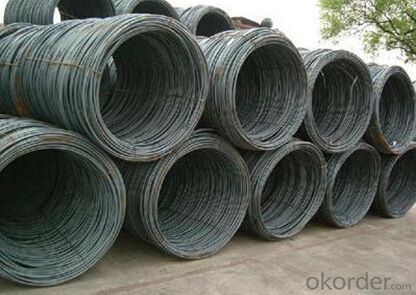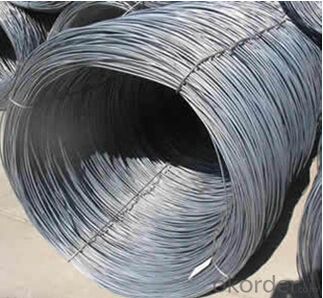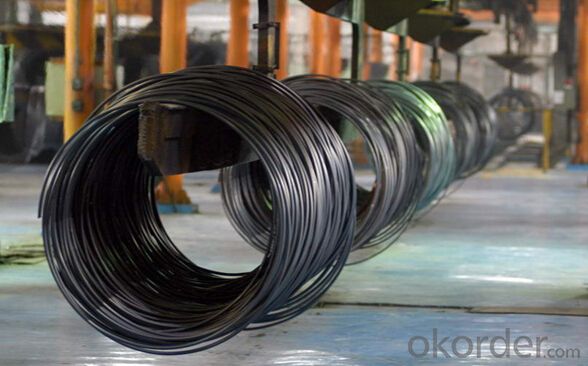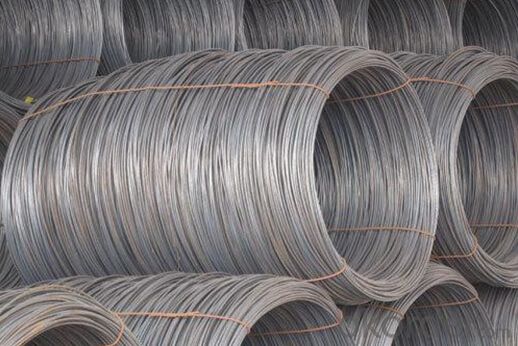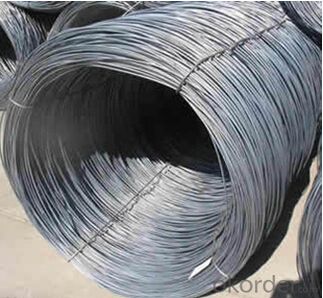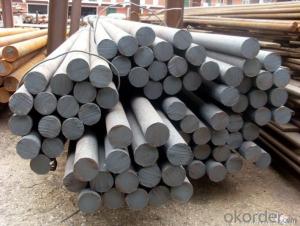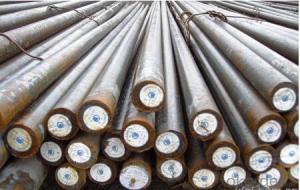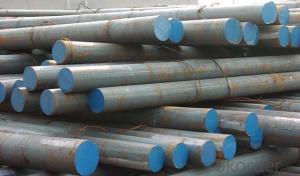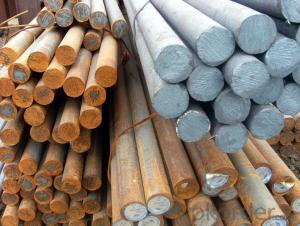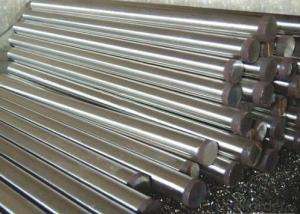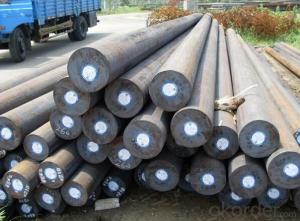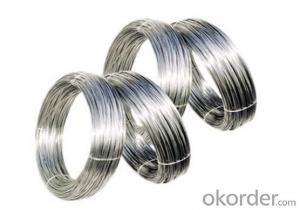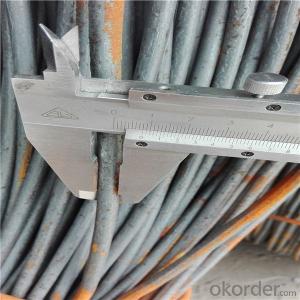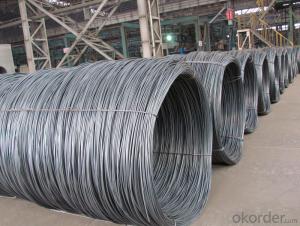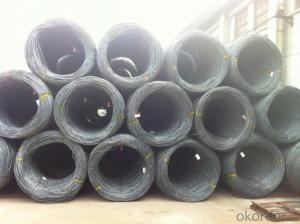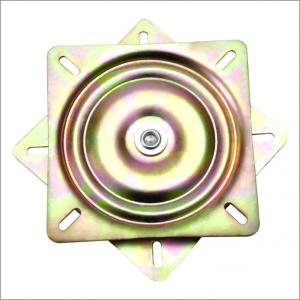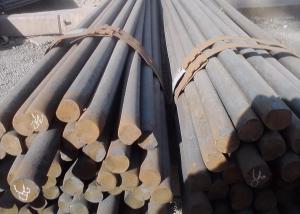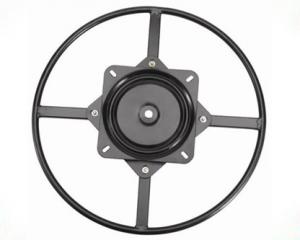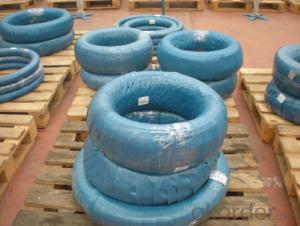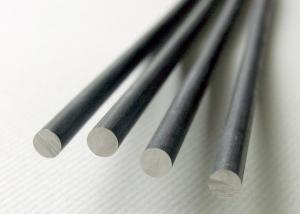Grade SAE 1008 Hot Rolled Steel Wire Rod in Coils
- Loading Port:
- Tianjin
- Payment Terms:
- TT OR LC
- Min Order Qty:
- 3 m.t.
- Supply Capability:
- 10000 m.t./month
OKorder Service Pledge
Quality Product, Order Online Tracking, Timely Delivery
OKorder Financial Service
Credit Rating, Credit Services, Credit Purchasing
You Might Also Like
Specification
Type:
Carbon Steel,Alloy Steel,Spring Steel,Bearing Steel,Gear Steel,Deformed Steel,Stainless Steel
Shape:
Steel Coil,Steel Sheet,Steel Wire Rod,Steel Flat Bar,Steel Square Bar,Steel Angle,Steel Round Bar,Steel Billets
Technique:
Spring,EFW,Extruded,Hot Rolled,Cold Rolled,Cold Drawn,ERW,Forged,Saw
Surface Treatment:
PVDF Coated,Black,Bright,Polished,Chromed Passivation,Dry,Oiled,Color Coated,Copper Coated,Coated,Galvanized
Certification:
UL,API,CE,RoHS,IBR,BV,SGS,ISO,BSI
Thickness:
5.5-12mm
Width:
5.5-12mm
Length:
In coils
Outer Diameter:
5.5-12mm
Net Weight:
2m.t.
Packaging:
Seaworthy packaging
Grade SAE 1008 Hot Rolled Steel Wire Rod in Coils
Detailed Information of the Grade SAE 1008 Hot Rolled Steel Wire Rod in Coils
| Name | Hot Rolled High Carbon Wire Rod |
| Shape | Round Bar/Square Bar/Flat Bar/Plate/Wire |
| Standard | GB/ASTM/SAE/AISI/DIN/JIS/EN/BS |
| Surface Treatment: | Black/Peeling/Polished/Machined |
| Delivery Condition: | Hot Rolled or Forged/Peeled or Black Surface |
| Test | SGS/UT 100% Elements Testing |
| Certificate: | ISO/Mill Certificate |
| Service: | 24 hours online service / |
| more than 20 years trading and manufacture | |
| Quality Assurance: | the third party inspection, such as SGS, BV, TUV…etc. is acceptable |
| Packaging Details: | Seaworthy Packaging or as per customer's packing instruction |
Chemical Composition of the Grade SAE 1008 Hot Rolled Steel Wire Rod in Coils
| Grade | Chemical Composition(%) | |||||
| C | Mn | Si | S | P | B | |
| SAE1008 | 0.1max. | 0.3~0.50 | 0.15max | 0.050max | ≤0.040 | >0.0008 |
| Mechanical properties | ||||||
| Yield strength(N/mm2) | Tensile strength(N/mm2) | Elongation(%) | ||||
| 250-280 | 350-380 | ≥32 | ||||
Company Introduction the Grade SAE 1008 Hot Rolled Steel Wire Rod in Coils
CNBM International Corporation is the most import and export platform of CNBM group(China National Building Material Group Corporation) ,which is a state-owned enterprise, ranked in 270th of Fortune Global 500 in 2015.
With its advantages, CNBM International are mainly concentrate on Cement, Glass, Iron and Steel, Ceramics industries and devotes herself for supplying high quality series of refractories as well as technical consultancies and logistics solution.

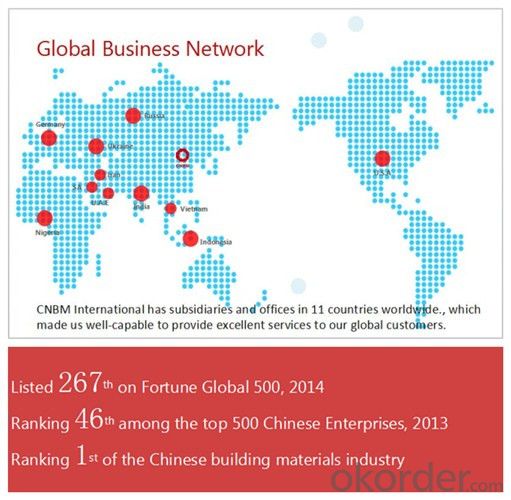
| After-sale service | CNBM provides the services and support you need for every step of our cooperation. We’re the business partners you can trust; you can relax and get on with doing business. |
| For any problem, please kindly contact us at any your convenient time, we’ll reply you in our first priority within 24 hours | |
| Advantages | Industry experience over 20 years. |
| Shipment of goods -More than 70 countries worldwide. | |
| The most convenient transport and prompt delivery. | |
| Competitive price with best service. | |
| High technical production line with top quality products. | |
| High reputation based on best quality products. |
Packaging & Delivery the Grade SAE 1008 Hot Rolled Steel Wire Rod in Coils
| Packaging Detail | Sea worthy packing /as per customer's packing instruction |
| Delivery Detail | 15 ~ 40 days after receiving the deposit |
Products Show
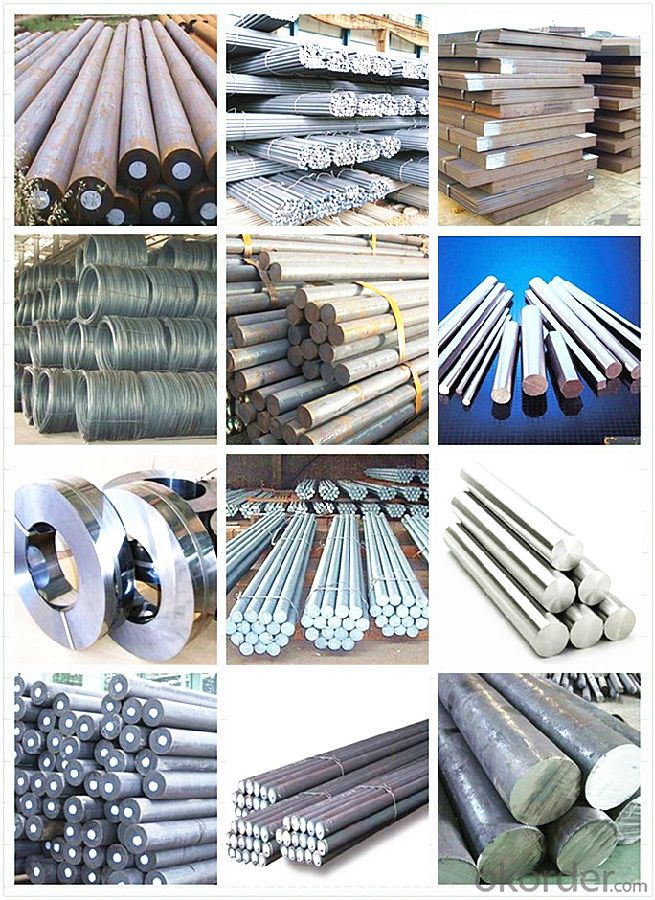
FAQ:
| Are you a trader or manufacturer? | Manufacturer |
| What’s the MOQ? | 3 metric ton |
| What’s your delivery time? | 15-35 days after downpayment received |
| Do you Accept OEM service? | Yes |
| what’s your delivery terms? | FOB/CFR/CIF |
| What's the Payment Terms? | 30% as deposit,70% before shipment by T/T |
| Western Union acceptable for small amount. | |
| L/C acceptable for large amount. | |
| Scrow ,Paybal,Alipay are also ok | |
| Why choose us? | Chose happens because of quality, then price, We can give you both. |
| Additionally, we can also offer professional products inquiry, products knowledge train (for agents), smooth goods delivery, excellent customer solution proposals. | |
| What's your available port of Shipment? | Main Port, China |
| What’s your featured services? | Our service formula: good quality+ good price+ good service=customer's trust |
| Where are your Market? | Covering more than 160 countries in the world |
- Q: How does special steel contribute to reducing product costs while maintaining quality?
- Special steel contributes to reducing product costs while maintaining quality through several ways. Firstly, special steel possesses enhanced strength and durability, allowing manufacturers to produce products with thinner gauges or smaller dimensions, reducing material usage and overall costs. Additionally, its superior corrosion resistance and longevity ensure that the products have a longer lifespan, reducing the need for frequent replacements. Moreover, special steel's exceptional machinability enables efficient production processes, reducing labor costs and increasing productivity. Lastly, its high precision and consistency in manufacturing contribute to minimizing defects and waste, resulting in cost savings and improved product quality. Overall, special steel's unique properties and characteristics enable manufacturers to optimize production, thereby reducing costs without compromising on product quality.
- Q: How does stainless steel contribute to the production of medical implants?
- Stainless steel contributes to the production of medical implants by providing a highly durable and corrosion-resistant material that is compatible with the human body. It is used in various implants such as joint replacements, dental implants, and surgical instruments due to its strength, biocompatibility, and ability to withstand sterilization processes.
- Q: Can special steel be used for making aerospace engine components?
- Yes, special steel can be used for making aerospace engine components. Special steel alloys, such as nickel-based superalloys and stainless steels, are commonly used in the aerospace industry due to their excellent mechanical properties, high temperature resistance, and superior corrosion resistance. These alloys are specifically designed to withstand the extreme conditions and demands of aerospace engines, including high temperatures, pressures, and stress levels. Additionally, special steel alloys offer high strength-to-weight ratios, which is crucial for reducing the weight of aerospace components while maintaining structural integrity. Therefore, the use of special steel in aerospace engine components ensures the reliability, performance, and safety of the engines in aeronautical applications.
- Q: What are the different chemical resistance grades of special steel?
- The different chemical resistance grades of special steel include austenitic stainless steel, duplex stainless steel, super duplex stainless steel, and high-alloy stainless steel.
- Q: Can special steel be used for making defense industry components?
- Indeed, the utilization of special steel in the production of defense industry components is possible. Special steel pertains to a classification of steel that has been deliberately designed and engineered to possess superior attributes and qualities when compared to standard steel grades. These attributes comprise high strength, exceptional toughness, resistance to corrosion, heat resistance, and wear resistance. Within defense industries, the materials utilized for components like armor plates, military vehicles, weapons systems, aircraft structures, and naval vessels must be able to endure extreme conditions while delivering optimal performance. Special steel, with its extraordinary attributes, fulfills these requirements and is frequently employed in the manufacturing of defense industry components. For instance, armor plates employed in military vehicles and personal body armor are commonly constructed from special steel alloys that can withstand ballistic impacts and safeguard personnel. Similarly, aircraft structures and naval vessels necessitate steel that can endure high stresses, corrosion caused by saltwater, and extreme temperatures, all of which can be accomplished through the use of special steel. Furthermore, the ease with which special steel can be machined, welded, and fabricated also contributes to its application in the production of defense industry components. This facilitates efficient production and assembly of intricate defense equipment. Overall, special steel is an essential material within the defense industry as it presents exceptional strength, durability, and performance attributes, rendering it an ideal selection for the production of defense components that must withstand rigorous and demanding conditions.
- Q: How is carbon steel used in the manufacturing of pipes and tubes?
- Carbon steel is commonly used in the manufacturing of pipes and tubes due to its high strength, durability, and affordability. Its composition, which includes mainly iron and carbon, provides it with excellent mechanical properties and resistance to corrosion. Carbon steel pipes and tubes are widely used in various industries, including oil and gas, construction, and manufacturing, for conveying fluids, gases, and solids. Its versatility and reliability make it a popular choice for a wide range of applications.
- Q: What are the different renewable energy grades of special steel?
- There are different grades of special steel used in the production of renewable energy equipment, such as wind turbines, solar panels, and hydroelectric generators. These grades include high-strength steel, corrosion-resistant steel, and heat-resistant steel. Each grade is specifically designed to withstand the unique operating conditions and environmental factors associated with renewable energy applications.
- Q: Can special steel be used in the medical industry?
- Yes, special steel can be used in the medical industry. It is commonly employed in the production of surgical instruments, medical implants, and equipment due to its high strength, corrosion resistance, and biocompatibility. Special steel alloys, such as stainless steel and titanium alloys, are extensively utilized in various medical applications to ensure patient safety and enhance the effectiveness of medical procedures.
- Q: How is corrosion-resistant steel used in marine applications?
- Corrosion-resistant steel is extensively used in marine applications due to its ability to withstand the harsh environment of seawater. It is employed in the construction of various marine structures such as ships, offshore platforms, and coastal infrastructure. This type of steel provides exceptional resistance to corrosion, preventing the degradation of materials and ensuring the longevity and safety of marine structures. Additionally, corrosion-resistant steel is used in the production of marine equipment, such as propellers, valves, and pipelines, as it offers superior durability and protection against corrosion caused by saltwater exposure.
- Q: What are the thermal conductivity properties of special steel?
- The thermal conductivity properties of special steels, also known as alloy steels, can differ based on their composition and specific heat treatment. The range of thermal conductivity for special steel is generally between 10 and 50 W/mK. The carbon content, alloying elements, and microstructure primarily influence the thermal conductivity of steel. Carbon acts as a thermal conductor, thus increasing the thermal conductivity of steel. However, alloying elements like chromium, nickel, and molybdenum have lower thermal conductivity than iron, which can reduce the thermal conductivity of steel. Furthermore, the microstructure of special steel plays a crucial role in determining its thermal conductivity. Heat treatments like quenching and tempering can modify the microstructure, thereby affecting the thermal conductivity. For instance, steels with higher carbon content and a martensitic microstructure generally have higher thermal conductivity compared to steels with lower carbon content and a ferritic or pearlitic microstructure. It is important to consider that factors such as impurities, grain size, and the presence of defects can also influence the thermal conductivity of special steel, either enhancing or reducing it. In conclusion, the thermal conductivity properties of special steel can vary depending on its composition, heat treatment, and microstructure. Therefore, it is crucial to take these factors into account when evaluating the thermal conductivity of special steel for specific applications.
Send your message to us
Grade SAE 1008 Hot Rolled Steel Wire Rod in Coils
- Loading Port:
- Tianjin
- Payment Terms:
- TT OR LC
- Min Order Qty:
- 3 m.t.
- Supply Capability:
- 10000 m.t./month
OKorder Service Pledge
Quality Product, Order Online Tracking, Timely Delivery
OKorder Financial Service
Credit Rating, Credit Services, Credit Purchasing
Similar products
Hot products
Hot Searches
Related keywords






